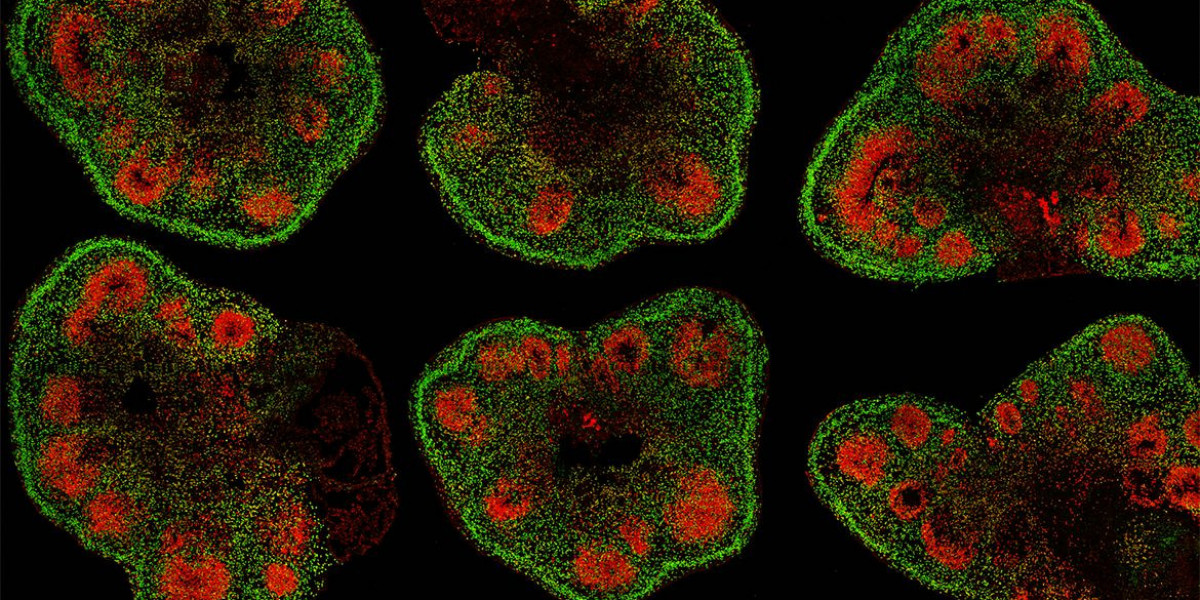The organoids market has witnessed rapid growth and expansion, emerging as a transformative force in medical research and therapeutic development. Organoids—miniaturized, three-dimensional organ-like structures grown from stem cells—are revolutionizing disease modeling and therapeutic development. By closely mimicking the architecture and functionality of human organs, organoids offer unprecedented opportunities to study disease mechanisms, test drug efficacy, and develop more personalized treatments. This article delves into the scope of the organoids market, highlighting their potential in advancing disease modeling and therapeutic development.
What Are Organoids and Why Are They Important?
Organoids are small, 3D cellular structures that can be cultured to resemble the functional properties of organs such as the brain, liver, heart, and intestines. These self-organizing clusters of cells are typically derived from stem cells, which can differentiate into various cell types and form miniature versions of human tissues. Because they replicate the complexity of human organs in a laboratory setting, organoids offer more accurate models for studying human diseases than traditional 2D cell cultures or animal models.
The significance of organoids lies in their ability to provide a more physiologically relevant platform for medical research. They retain much of the tissue architecture, cellular diversity, and functionality of real organs, making them invaluable for understanding diseases at a cellular and molecular level. This allows for more precise disease modeling, drug discovery, and therapeutic development, particularly in personalized medicine.
The Role of Organoids in Advancing Disease Modeling
Disease modeling refers to the process of creating and studying models that simulate diseases in order to understand their progression, identify potential biomarkers, and test therapeutic interventions. Traditional methods of disease modeling—such as using animal models or 2D cell cultures—often fall short due to the inherent differences between humans and animals, as well as the limitations of flat, two-dimensional systems.
Organoids address these issues by offering a more human-like representation of diseases. Organoids can be derived from patient-specific cells, creating patient-derived organoids (PDOs) that mimic the individual’s disease, genetic profile, and response to treatment. These organoids allow researchers to study diseases such as cancer, neurodegenerative disorders, cardiovascular diseases, and infectious diseases in a highly relevant context. For instance, patient-derived tumor organoids (PDTOs) have become a valuable tool for studying cancer, as they replicate the complexity of individual tumors, including their genetic mutations and heterogeneity.
In neurodegenerative disease research, such as Alzheimer’s and Parkinson’s, brain organoids are used to model the effects of genetic mutations and to test potential drugs. By enabling researchers to study how diseases develop and how different therapies affect the cells within organoids, this technology has accelerated the pace of understanding disease mechanisms and potential treatment options.
Furthermore, organoids can be used to model diseases that are difficult to replicate in animal models, such as rare diseases or human-specific conditions. This broadens the scope of disease modeling, providing opportunities to explore previously uncharted areas of medical research.
Organoids in Therapeutic Development
The use of organoids in therapeutic development is one of the most exciting and impactful applications of this technology. Traditional drug development often involves screening compounds in animal models or 2D cell cultures, but these methods are limited in their ability to predict human responses accurately. Organoids, however, provide a more relevant model for testing the efficacy and safety of new drugs.
Organoids can be used for high-throughput drug screening, where thousands of compounds can be tested in a more human-relevant context. For instance, organoid-based drug discovery enables the identification of potential drug candidates for various diseases, including cancer, diabetes, and heart disease. By screening drugs on patient-derived organoids, researchers can identify which treatments are most likely to be effective for specific individuals, paving the way for personalized medicine.
In the context of cancer research, organoids have been used to test chemotherapies and targeted therapies to see how individual tumors respond to different treatments. Since patient-derived tumor organoids replicate the genetic profile and microenvironment of the original tumor, they can predict treatment efficacy much more accurately than traditional models. This allows for better-targeted therapies, reducing side effects and improving outcomes.
Similarly, organoids are being used to study the toxicity of new drugs. Since organoids are derived from human tissue, they offer a more accurate representation of how a drug may affect specific organs, such as the liver, heart, or kidneys. This is particularly important for identifying drug-induced toxicities before drugs enter clinical trials, reducing the risk of adverse effects in patients.
Organoids in Personalized Medicine
One of the most significant advancements enabled by organoids is their role in personalized medicine. Personalized medicine aims to tailor medical treatments to the individual characteristics of each patient, including their genetic makeup, disease profile, and response to treatments. Organoids play a critical role in this approach by providing a platform to test therapies on patient-specific models.
For example, patient-derived organoids (PDOs) can be used to test a range of drugs on an individual’s disease, helping to determine which treatments are likely to be the most effective. This is particularly important for cancer patients, as tumors can be highly heterogeneous and resistant to standard treatments. By testing various therapies on a patient’s own tumor organoid, doctors can select the treatment that is most likely to lead to remission or improve survival rates.
Organoids also offer the potential to develop personalized drug regimens. By testing multiple drug combinations on patient-derived organoids, researchers can identify the most effective combination for treating that specific patient’s disease, paving the way for more targeted and personalized treatment strategies.
The Future Scope of Organoids in Medical Research
The scope of the organoids market continues to expand as technology advances. Organoids are being used to model increasingly complex diseases, such as autoimmune diseases, cardiovascular diseases, and metabolic disorders. Moreover, innovations in bioprinting, genetic editing, and artificial intelligence (AI) are expected to further enhance the capabilities of organoid technologies.
The integration of AI with organoid-based models will enable faster data analysis and predictive modeling, allowing researchers to identify new drug candidates and potential treatments more efficiently. As the cost of organoid generation decreases and automation improves, organoids are likely to become a standard tool in both academic research and the pharmaceutical industry.
The regulatory landscape is also evolving to support the use of organoids in drug development and personalized medicine. As the FDA and other regulatory bodies recognize the value of organoid models, we can expect to see more widespread adoption in clinical trials and the approval process.
Conclusion
The organoids market is poised for significant growth as the technology continues to transform the fields of disease modeling, drug discovery, and therapeutic development. By offering human-relevant, patient-specific models, organoids are enabling more accurate disease simulations, drug screening, and the development of personalized treatments. The ongoing advancements in organoid technologies have the potential to revolutionize the way we approach medical research, providing a more efficient and effective pathway toward personalized, patient-centered care. As the scope of organoids continues to expand, they will undoubtedly play a crucial role in shaping the future of biomedical research and clinical therapies.







